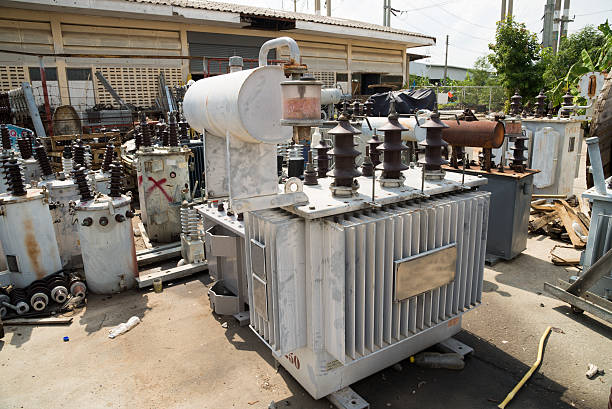Unveiling the Technical Specifications: KVA Rating, Single-Phase vs. Three-Phase, and Dry-Type Transformers
To select an appropriate 208V to 240V 3 phase buck boost transformer , it is necessary to comprehend some important technical details:
- KVA or KW Rating :
This represents the transformer’s ability to handle power. Choose a transformer whose KVA or KW rating is at least 20–30% more than the wattage required by your equipment to guarantee safe and dependable operation. This buffer ensures that when controlling the electrical load, the transformer won’t overload or overheat.
- Single-phase versus three-phase electricity:
Single-phase power is used in most commercial buildings. Thus, the most common option is single-phase 208V to 240V transformers. On the other hand, three-phase transformers offer an effective and balanced power distribution for buildings with three-phase electrical systems .
- Dry-Type Transformers:
Because of their lightweight design and low maintenance needs, these transformers are commonly employed. Since they are air-cooled, there is no need for coolant liquids, which may leak and endanger the environment.
Understanding the Power Play: Step-Up, Voltage Conversion, and Stabilization
A 208V to 240V three phase buck boost transformer is a flexible way to handle voltage mismatches. Its primary function is that of a step-up transformer, raising the 208V AC voltage that is input to the 230V AC output level that your equipment needs. This is especially helpful in cases when buildings designed for 240V operation are suddenly linked to a 208V power supply.
But these 3 phase buck boost transformer’s function goes beyond just raising voltage. Some types can stabilize the voltage. This guarantees a constant output voltage regardless of variations in the input supply. This extra function is very helpful for safeguarding fragile equipment that might be damaged by abrupt voltage dips or spikes.
Unveiling the Magic: How a 208V to 240V 3 phase buck boost transformer Functions?
The basic ideas of electromagnetism explain why these buck boost transformer may change voltage. Using pertinent terms and ideas, this section explores the fundamental operations of these transformers.
- The Core of Transformers: Magnetic Fields and Coils:
The buck boost transformer’s core, which is usually made of laminated silicon steel, is its central component. Two or more coils of conductive wire, usually copper, are wrapped around this core. These coils are identified as the subordinate coil, which provides the boosted 240V output, and the primary coil, which is connected to the 208V input.
A magnetic field is created within the transformer core by the primary coil when an alternating current (AC) passes through it. This magnetic field constantly increases and contracts. This changing magnetic field is an essential component of the voltage correction procedure.
Selecting the right 208V to 240V 3 phase buck boost transformer: Essential Considerations
When choosing the best three-phase buck boost transformer , there are a few things to take into account:
- Manufacturer Reputation and Warranty:
Choose transformers from respectable suppliers that are acknowledged for their quality and dependability. An extended warranty period provides peace of mind and shows the manufacturer’s trust in their goods.
- Power Requirements:
Determine the exact wattage of the industrial equipment you plan to power to determine the power requirements. For safe operation, use a transformer with a KVA or KW rating at least 20–30% greater than this wattage.
- Safety and Reliability:
Prioritize safety by selecting a transformer that conforms with safety laws such as the National Electrical Code (NEC) and is recognized by Underwriters Laboratories (UL). This will ensure both safety and reliability. For increased safety, look for features like overload prevention and temperature monitoring.
- Durability and Environmental Conditions:
Industrial settings may be challenging. Choose a transformer made of durable materials that can tolerate exposure to dust, moisture, or vibrations. Make sure that the temperature range at which the transformer operates corresponds to your environment.

Applications of 208v to 240v 3 phase voltage converter:
These 208V to 240V 3 phase buck boost transformer is used in many different sectors.
- HVAC Transformers:
It’s critical to maintain maximum performance in HVAC systems, and these transformers’ modest voltage boost—from 208V to 240V—can greatly increase efficiency.
- Commercial and Industrial Settings:
Using commercial-grade buck boost transformers may greatly assist businesses that use equipment meant for 240V but are connected to a 208V power source. In industrial plants and data centers, this is a common situation.
- Transformers for motor control:
Accurate voltage regulation is necessary in applications involving motors. Buck boost transformers with 208V to 240V ratings are capable of supplying the voltage modifications required for the best possible motor performance.
The Three-Phase Advantage: Handling Power Efficiently:
The transformer’s “3 phase” capability denotes its capacity to manage three distinct phases of AC electricity. The same voltage adjustment approach as previously mentioned applies to each phase. Power distribution in industrial environments, where balanced and high-power applications are common, is made possible by this three-phase design.
Engineering the Boost: The Power of Turns Ratio
The secondary coil of a three-phase buck boost transformer operating at 208V to 240V has more turns than the main coil. This particular design uses Faraday’s Law to provide a step-up effect. A greater EMF is produced by the collapsing magnetic field when the secondary coil has more turns, which raises the voltage output at the secondary terminals.
Voltage Stabilization Considerations:
Three-phase buck boost transformers operating at 208V to 240V serve mainly as step-up transformers; however, certain versions also include extra capabilities for basic voltage stability. By doing this, small variations in the input voltage supply may be lessened. Dedicated voltage regulators , however, can be a better option for applications needing accurate and reliable voltage management.
Conclusion:
Shinenergy provides a wide range of trustworthy, premium transformers to close the voltage differential and ensure your equipment is operating at peak efficiency. You may browse our product catalog on our website, or you can get in touch with our friendly team to get help choosing the best transformer for your particular requirements.

